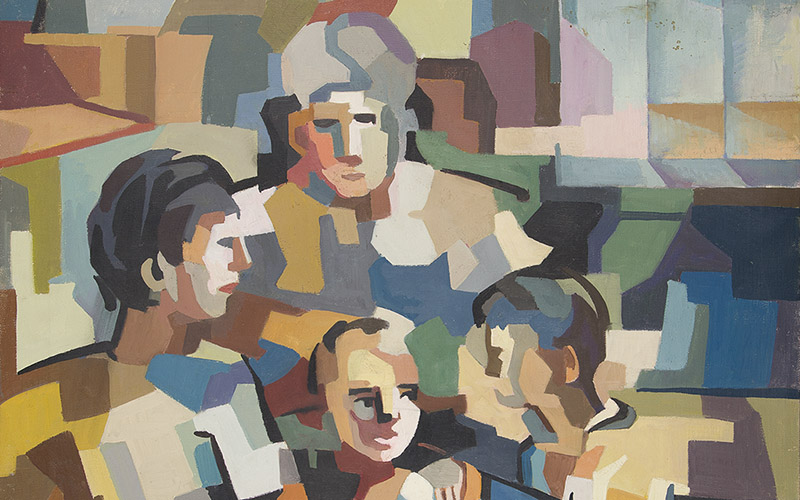Art and architecture between Lisbon and Baghdad

The unknown story of the rare collection of Iraqi art in the Modern Collection of the Calouste Gulbenkian Museum, one of the most important worldwide, is revealed in this exhibition.
Between the end of the 1950s and the early 1970s, the Calouste Gulbenkian Foundation advanced with deep reaching philanthropic activities in Iraq applying, to this end, a proportion of the revenues generated by oil exploration in the country. Through to 1972, the year when the Iraqi government nationalised the oil sector, the Foundation had subsidised the construction and fitting out of 120 infrastructures – schools, universities, hospitals and museums –, and provided 615 national and international post-graduate grants to Iraqi students.
One of the major works either built or supported by the Foundation over these two decades is the Modern Arts Centre in Baghdad (known as Gulbenkian Hall), which was the first purpose designed exhibition venue for works of modern art in Iraq. When this Centre opened its doors in 1962, the Gulbenkian Foundation acquired an important set of Iraqi works that joined another set of works, purchased at a later date, on the occasion of the exhibition that inaugurated the headquarters building of the Society of Iraqi Artists in 1966, with its construction subsidised by the Foundation.
These two moments of acquisition form the core of what is today the rare Calouste Gulbenkian Museum collection of Iraqi modern art made up of 31 works. Engravings by Rafa Nasiri, Salem Dabbagh and Hashim Samarchi, trained in Portugal at the Engraving Cooperative following grants awarded by the Foundation in 1968, complete this unique collection, with its founding contextualised in this exhibition.
The point of departure is the Gulbenkian Cultural Week that the Foundation staged in Baghdad in November 1966 and coincided with the inauguration of the People’s Stadium (Al-Sha’ab), a large sporting complex designed by the architects Francisco Keil do Amaral and Carlos Manuel Ramos, and also built by the Foundation, which became a landmark reference throughout the Middle East. This construction took place in conjunction with that of the Foundation’s Main Building and Museum, involving substantial resources. The Cultural Week was another high point recalled here: the organisation of the exhibition, in the Gulbenkian Hall, of a collection of 70 works of art by Portuguese and international artists, which would itself come to form the Foundation’s future Modern Art Collection.
Included within the Conversations at the Calouste Gulbenkian Museum cycle, the exhibition features original documents and Iraqi works of art from the Modern Collection of the Calouste Gulbenkian Museum with the majority never before exhibited in Portugal.
Curated by Patrícia Rosas and Ricardo Agarez, this exhibition is a collaborative project between the Calouste Gulbenkian Museum and the Gulbenkian Library of Art and Archives, with support from the Grant Service.
Art and Architecture between Lisbon and Baghdad
The Calouste Gulbenkian Foundation in Iraq, 1957-1973
Curators: Patrícia Rosas and Ricardo Agarez
Founder’s Collection – Lower Gallery, Calouste Gulbenkian Museum
26 Oct 2018 — 28 Jan 2019
